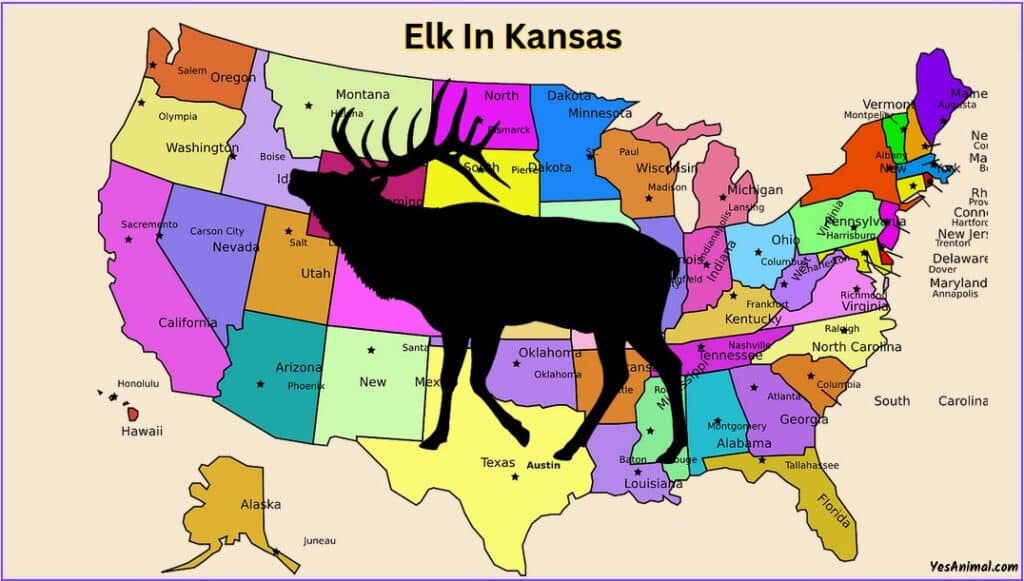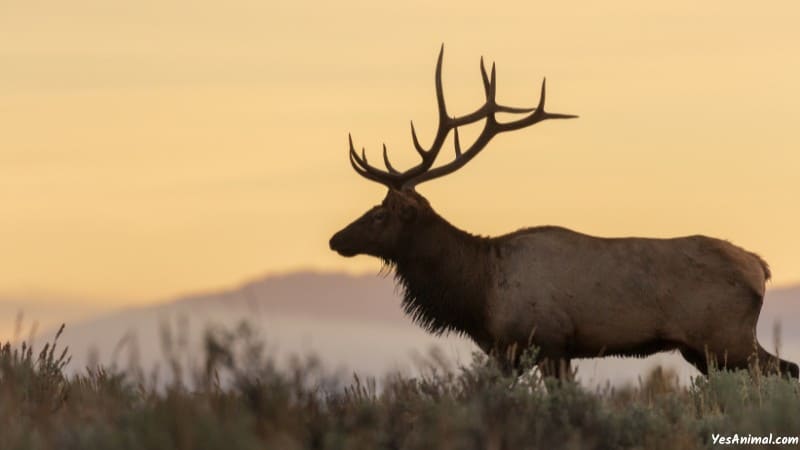Last Updated on September 14, 2023 by Amin Tawar

Elk are one of the most hunted game species and were a pretty common sight in the landscapes of the historical North American continent. But after European settlement, these majestic creatures were extirpated from many states of the country albeit with few populations.
One such lucky state is Kansas. Below I’ve explained everything you need to know about the presence of elk in the state now, the subspecies of elk, where you could see one, what would they eat, and if you could hunt them as a resident or as a non-resident.
Are There Any Elk in Kansas?
Yes, Though pre-European settlement Kansas did have a widely distributed elk population, post-European settlement, these creatures were pushed to extermination.
This is quite similar to what happened in many states of the country. But thanks to a small herd of elk conserved in the Maxwell Wildlife Area, the elks were in fact still in Kansas. The rest is history, as these elk individuals went on to breed, were relocated, and repopulated various regions in the state.
How Many Elk Are in Kansas?
As per the latest estimate by the Kansas Department of Wildlife and Parks, there are about 200 to 500 individual elks found in the state. This is lower compared to states like Colorado, Montana, and Oregon but nonetheless better than those states that have lost these creatures due to extensive hunting.
Though these creatures were once restricted to the Maxwell Wildlife Area once, today due to reintroductions into various areas, these creatures can now be often spotted and hunted in order to keep the population stable.
What Kind Of Elk Are In Kansas?

American elk also called wapiti are the type of elk found in the state. Although the subspecies of elk in the state are not confirmed, it is most likely Rock Mountain elk due to its physical features.
Also Check Our Guide On Elk In Colorado
Where Can I See Elk in Kansas? (Best Time to See Elk in Kansas?)
After their extirpation in the mid-1900s, the only left population of elk in the state could be found in Maxwell Wildlife Area which is a 2,200-acre enclosure. This acted as the refuge and many individuals from this enclosure were introduced into different parts of the states.
These regions include Cimarron National Grassland, fort Riley Military Reservation which is currently the primary spot to hunt elks, and some other locations.
So, if you go to these places, especially during dawn or dusk, you can easily spot them. Additionally, as these creatures are most active during the rut or breeding season, visit these locations between September to October to improve your chances of spotting them.
You can also spot them easily during the winter months due to the snow background which makes it easier to spot elk and even any other wildlife.
What Do Elk Eat In Kansas?
Elk in Kansas like in other states are herbivores and opportunistic. So, most of the time, they will eat whatever they find in the habitat provided. Typically, the elk diet in Kansas includes grasses through the year, tree barks in winter, and tree sprouts and forbs during summer. Some other food includes Dandelions, wheatgrass, bluegrass, and violets.
Can You Hunt & Shoot Elk in Kansas?
Yes, It is legal to hunt and shoot elk in Kansas with a valid hunting license. To get one, you need to apply for the limited elk permits in the Kansas Department of Wildlife and Parks.
The department issued the license through a lottery. And one unique thing about the lottery in Kansas is that each year the applicant is unsuccessful, one bonus point will be added. But if an applicant gets drawn or hasn’t applied for a year in 5 consecutive years, the bonus points connected so far will be lost.
There are many seasons for elk hunting in the state. Most seasons occur in Ft. Riley and others in many other counties, excluding Morton County. Note that, the state used hunting as an opportunity to manage the elk population in the state. Remember, these creatures have been thriving and may one day overgraze the lands and destroy vegetation if let on unregulated.
Can A Non-Resident Hunt Elk In Kansas?
Yes, As a non-resident too you can hunt elk in Kansas. The main requirements are a non-resident hunting permit and a non-resident elk hunting permit from the Kansas Department of Wildlife and Park.
Note that different type of hunting techniques requires a different price. The same is actually true for residents as well and both adult residents and non-residents need to pay the same fee for hunting.
Also Check Our Guide On Elk In America
Conclusion
And that was everything you need to know about the Elk In Kansas. I hope this article answered all your queries.
Thank You For Reading!
Our Source For This Guide